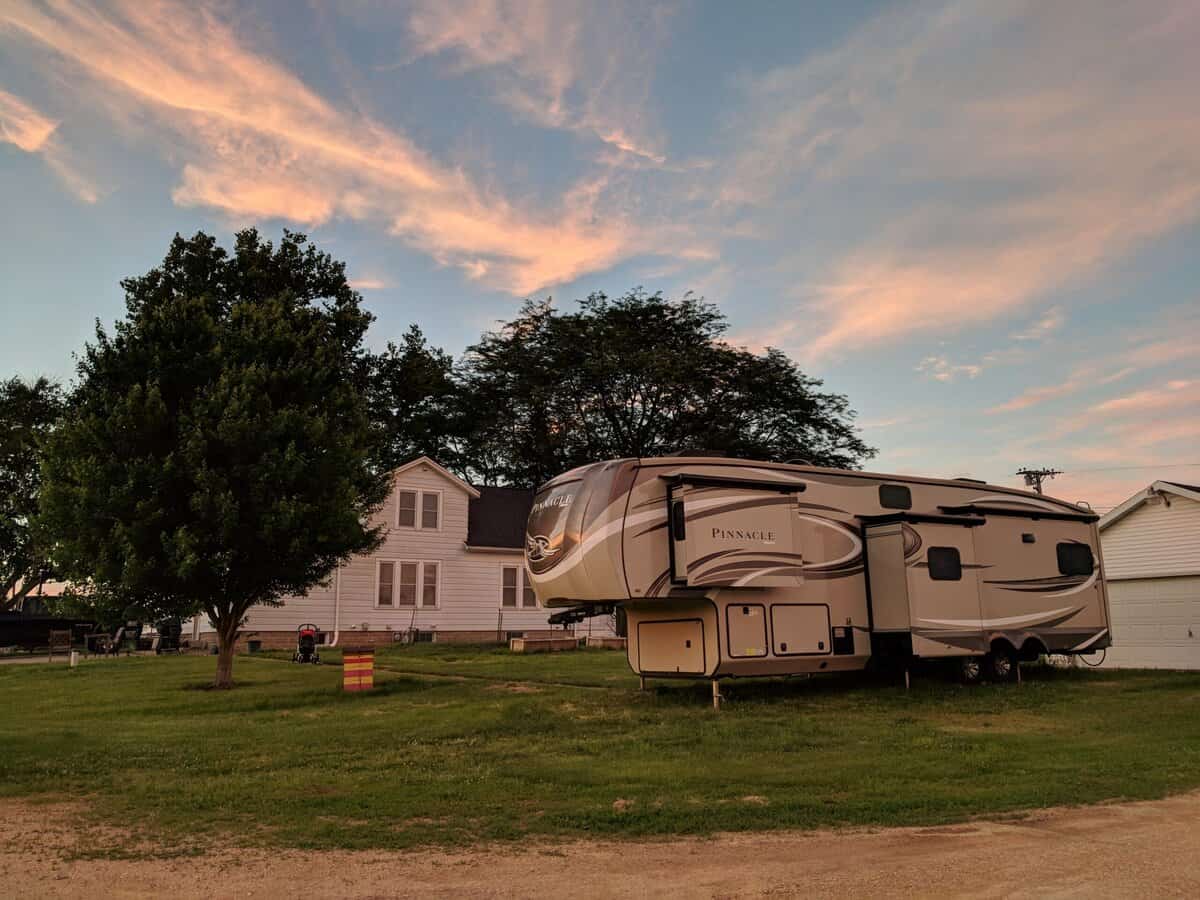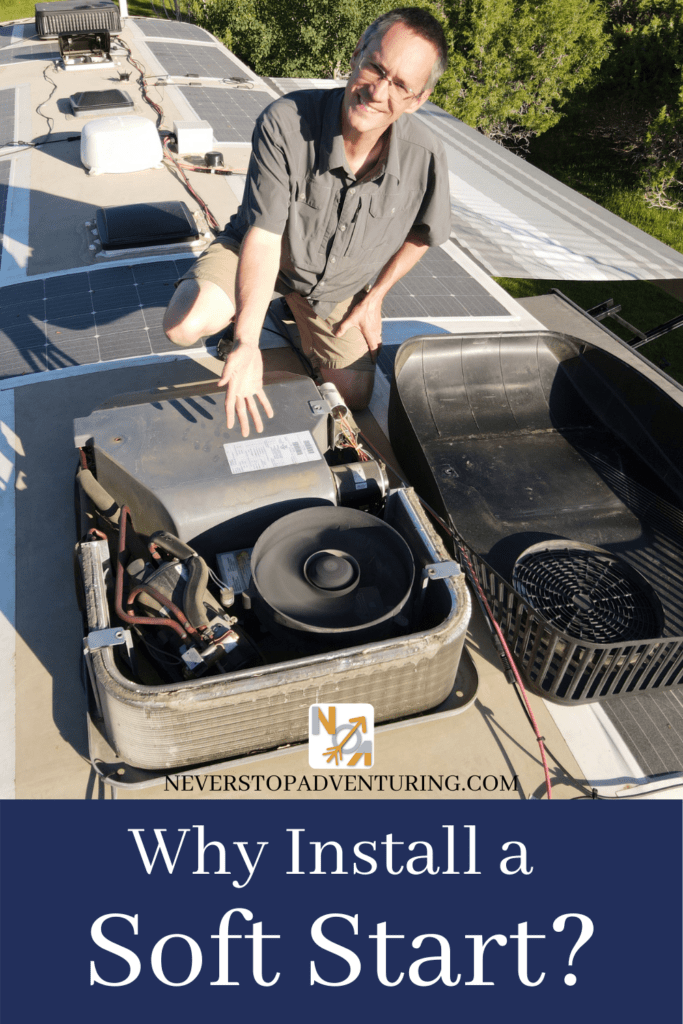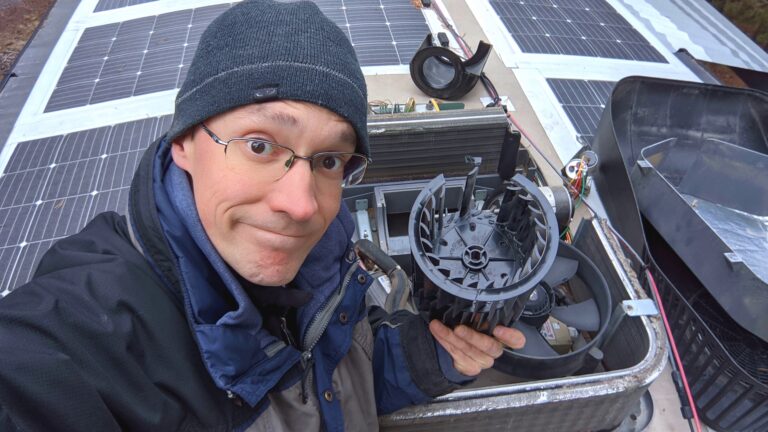Soft Starters For Your RV Air Conditioner, Why?
What are soft starters and why are they such a popular RV upgrade? Because they allow you to run your AC in many scenarios where you otherwise could not! It lowers the amount of current needed to start your AC.
We will discuss soft starters vs hard starters, what they do and why you would install them, and review a Micro-Air EasyStart. We’ll give you the parts list we used for our installation as well.
DISCLAIMER: This post may contain links to affiliate websites. When you click on and/or make a purchase through an affiliate link placed on our website, we may receive a small commission or other form of compensation at no additional cost to you. Please read our disclaimer for more info.
Soft Starters VS Hard Starters
Sometimes these two terms are used interchangeably. Hard Starters refer to an extra capacitor that “helps” start your AC. However, they don’t lower that initial power spike that pops breakers. Soft Starters, on the other hand, are a smart device that learns your AC’s power usage. After the first few startups, it spreads out that initial power surge over a slightly longer period of time. This greatly reduces the amount of power needed for startup.
Why Install A Soft Starter?
While they aren’t cheap, they do offer a lot of benefits. We were not able to run our 15k AC unit with our 2200W Generator without it. It also allows both ACs to operate on a 30A connection without popping breakers. On top of that, we have been able to run our main 15k unit with just a regular extension cord at a house.

Speaking of parking next to a house, another benefit has been being able to run both AC units with a Y adapter. As mentioned in the video, this allows you to split a 50A power cord into two 15A connections. With soft starters in both AC units we can run both at the same time this way! However, you must connect each side to two non-GFCI plugs on separate breakers for this to work. I would also recommend heavy duty extension cords with a 20A rating vs the smaller 15A cords.
The Parts List
EasyStart by Micro-Air: https://amzn.to/3cWjnX3 (1 per AC Unit)
EasyStart Installation Instructions (Select Your AC Brand): http://www.micro-air.com/kb-easystart/articles_installation/easystart_RV_Brand_Specific_Wiring_Diagrams.cfm
Camco Y-Adapter: https://amzn.to/35Et9Ju (Splits a 50A power cord into a 30A and 15A)
Camco 30A to 15A Adapter: https://amzn.to/3qfrJ1A (To convert the 30A side of the Y-Adapter to a 2nd 15A connection)
10AWG 15A Heavy Duty Extension Cord: https://amzn.to/3gDduQS (So you don’t melt those 15A plugs when running your AC at friends/family’s houses!)
Honda EU2200i Generator: https://amzn.to/3j7KUcb (This quiet 2200W generator will run anything in our RV! As long as it’s 1 major appliance at a time of course. It’s also really fuel efficient!)
6 Gallon Auxiliary Gas Tank for Honda EU2200: https://amzn.to/3cRbwd9 (Because the generator by itself only has a 0.95 gallon capacity)
If you liked this post, would you share it with friends? Thank you!
If you’d like to read about our RV and other RV adventures, then check out some of our other posts :
- RV Solar System Installation Series // 7.2kWh Batteries & 6kW Inverter Upgrade
- RV Solar System Installation Series // 2625W of Solar
- RV Solar System Lessons Learned
- RV Tank Sensors Not Working? We Use An RV Water Flow Meter Instead!
- Portable RV Waste Tank, Freshwater Tank and Pumps
Pin For Later:





